Grocery and food delivery platforms are becoming more popular in recent years for their convenience and accessibility. More than ever, busy customers are using food ordering and grocery websites to save their time.
Right now in the outbreak of COVID-19 (coronavirus), it’s even more common to order food online as people prefer to stay at home. Food delivery websites are developed to enable customers to choose from a wide range of restaurants and pay for their orders in an easy and fast way.
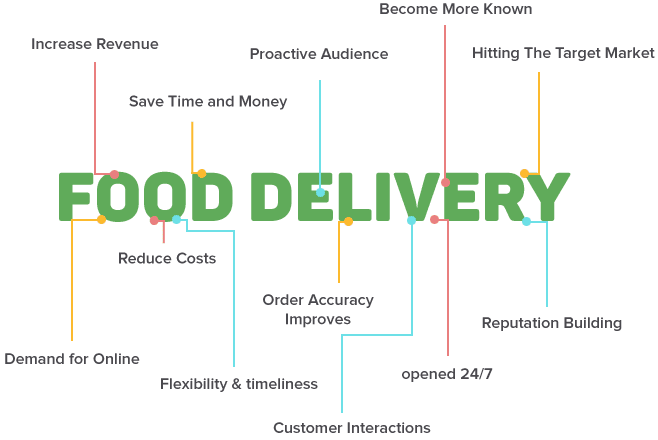
What food delivery brands are outperforming the market?
According to Statista, beverage and food ecommerce revenue in the U.S is expected to exceed $7.5 billion in 2020 and reach $8,5 billion by 2024. However, the food and beverage sector has not yet broadly adopted ecommerce in comparison to the electronics and fashion sectors.
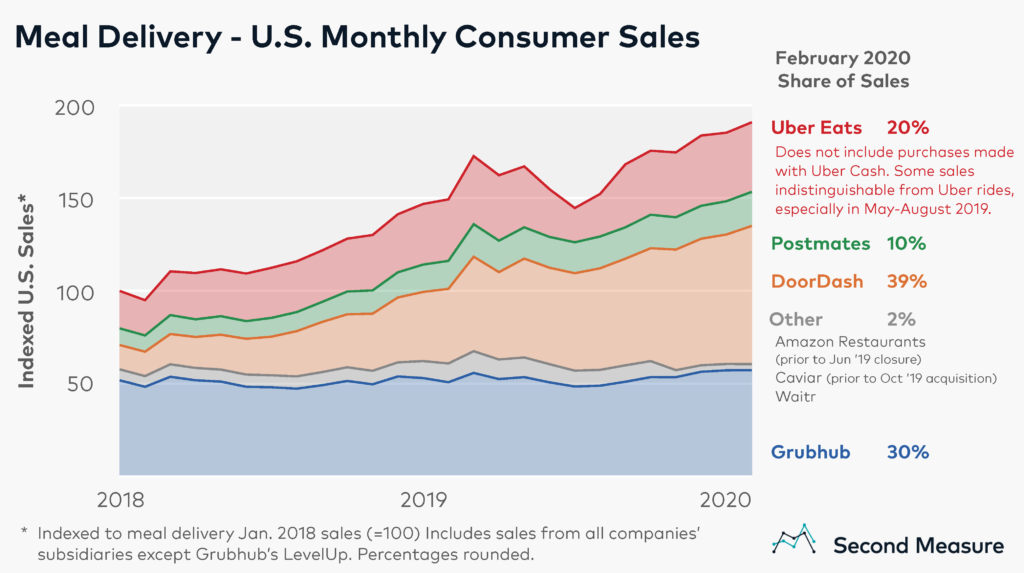
In Italy, which has experienced many confirmed cases of coronavirus, more people started using food delivery services. According to SimilarWeb, food delivery spending in February grew by 20 %.

In this article, we are going to discuss how to make an online food delivery website, which food delivery method to choose and what ecommerce platform is the best for food delivery.
Which Food Delivery Model to Select?
Online delivery business gives many possibilities to attract new customers. Here is a list of different sub-models of food delivery services.
The order-only
The order-only model is the most common. How does it operate? Such food delivery platforms connect customers with local restaurants/cafes and these catering establishments deliver orders themselves. These food delivery platforms act as an intermediary between the customer and the restaurant, simplifying the food ordering. This model is used by JustEat, Grubhub and more. These food services usually charge between 5%–15% per each order received.
The order and delivery
Such a food ecommerce website manages orders for food establishments and also handles the delivery by providing their own courier services. This model is used by UberEats, DoorDash, and more. This model suits restaurant owners who don’t have the possibility to hire couriers and invest money in the logistics system.
The fully integrated
The fully integrated model manages all three services – cooking, ordering, and delivery. Such a business model demands a lot of extra expenses like salaries for cooks, couriers, and an additional budget for refrigerated trucks, heaters, etc.
How to make the best food delivery website
The development of the food delivery website includes many elements such as selecting the right platform, creating the domain, getting hosting, choosing features and design, and organizing the delivery. Let’s talk in detail about each step so you know better about the flow of food delivery website development.

Choose a top platform for your food delivery website
The first step to developing the best food ecommerce website is to decide what ecommerce solution you will use. If you require a flexible solution with custom-built functionality, advanced SEO, and security select among top ecommerce platforms such as Magento and Shopify.
You could also hire an ecommerce team to develop a custom food delivery website according to your business goals. However, this option takes much more time and can cost a pretty penny. Due to the coronavirus outbreak, you need to start a delivery business as soon as possible at a minimum cost.
We recommend building your food delivery website on Magento as it has all the ingredients you need to run a fully-operational store. Below we describe in more detail why many food and beverage companies use Magento to sell food online.
Read more: RFP for Ecommerce Website: Hunting Out the Best Vendor to Replatform
Create your domain name and get hosting
After you make up your mind what ecommerce solution to choose to build your best grocery ecommerce platform, the next step is to purchase a domain name and hosting plan.
Select a domain name that fits your restaurant’s name. If it’s already taken, we recommend adding your city name into the domain to distinguish it. The most common domain extensions are .com, .org, .co, .net, and .info. These were the first domain extensions that existed and are the most recognizable.
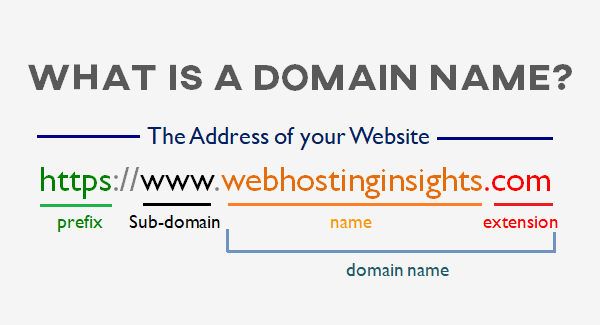
Once you have a domain name, it’s time to get web hosting. Web hosting can be provided by your ecommerce platform. You can also use third-party providers to host your ecommerce food website.
There are four main types of hosting options: shared, VPS, dedicated, and cloud, and which one you go with depends on how much traffic you expect to get.
Moreover, don’t forget to set up a domain-based email to be able to send emails and order notifications to your customers.
Make sure your food delivery web design is user-friendly
Make sure your food delivery website has a great user interface (UI) and user experience (UX) design. Provide smooth and clear navigation, with solid CTAs (call to actions), advanced search functionality and filtering and place them in prominent locations. This can ensure your customers stay on your ecommerce food site longer. To minimize cart abandonment rates provide easy-to-use checkout and secure payment options.

Your website must be visually appealing to attract new customers. If you’re selling food online, it’s crucial that you provide high-quality and attractive images to make the food look delicious. We also recommend creating detailed original descriptions of the food you put on your website.
Choose the most suited themes that are easy to navigate, include visible CTAs for ordering food, and have enough space for high-resolution photos.
Pay attention to SEO and Social Media
SEO (search engine optimization) is a strategy for driving traffic to your website from the search engine results page (SERP). Make sure that your food delivery website has clear URLs, image alt tags, and concise meta tags to help your potential customers find your company.
Social media platforms such as Facebook, Pinterest and Instagram are the best way to interact with your customers and share useful content. 71% of customers recommend the product to their close friends if they had a positive user experience on the company’s social media. Always reply to customers’ comments or reviews and offer loyalty programs for most active ones.
Organize delivery
The last step you should think over before launching your food ecommerce website is to organize delivery. Merchants should arrange a few aspects.
Payment
We recommend enabling both types of payments: pre-payment after the customer placed the order and payment upon delivery. Payment upon delivery is quite clear, the customer pays by credit card or cash when he/she receives the order.
Prepayments have some nuances you should know about. Food is quite often sold by weight, thus shoppers do not always know the final price at the stage of order registration. So customers make a prepayment by bank transfer or with a credit card for the highest possible order cost. The difference between the prepaid cost and the final price is automatically returned back to the customer’s bank account upon delivery.
Customers that buy on their mobile devices prefer to pay using Google Pay and Apple Pay as they don’t need to enter their card and personal details. Check out our articles about how to add Google Pay and Apple Pay to your food delivery platform.
Packaging
Packaging can increase your company’s brand values and guarantee that the food is secured for the carriage. Don’t forget that your food packing should comply with the requirements for shipping.
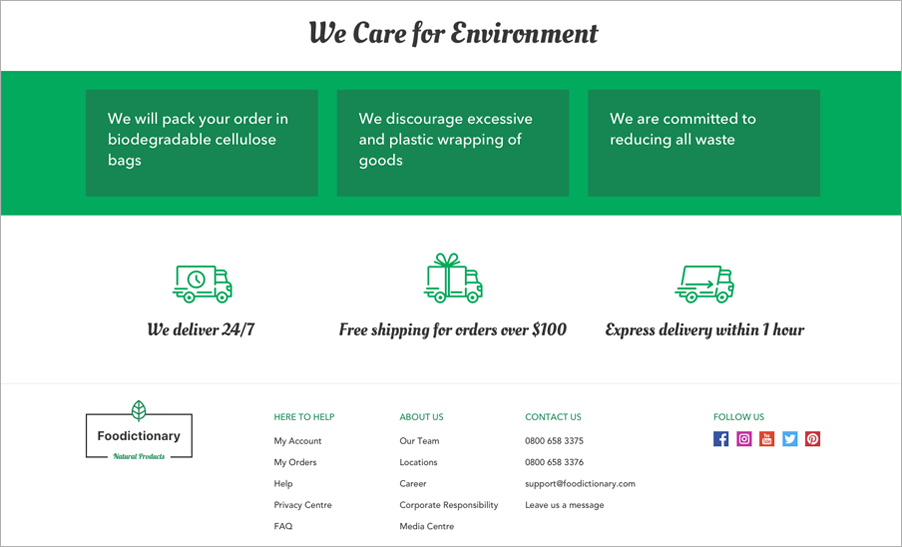
To cater to the eco-friendly customers, we recommend offering them the possibility to choose eco-friendly packaging. You can use recycled material, adopt sustainable packaging, etc. For example, Waitrose, the UK grocery retailer, has embraced eco-friendly packaging in favour of the compostable design. The containers are made of a fibre-based material that can be recycled.
Delivery options
The owners of food delivery websites should concentrate on customer demands to provide the best delivery options for them. Contactless delivery, automated express delivery, and click-and-pick delivery are the most common types.
With contactless delivery, your customer places the food order, pays with the credit card and the courier puts the order on a safe distance near their home to minimize contact between them and the courier.
With Automated express delivery, your customers get their orders in the fastest possible way. Usually, they will need to pay an extra delivery cost for this type of delivery.
Click and collect is a delivery model in which customers buy or choose products online and pick them up in the physical grocery store or restaurant.
Delivery by drones has been getting a lot of attention these days. Drones can deliver products fast, are cheaper in comparison to delivery by vehicles, support real-time tracking, and are eco-friendly.
Customers typically use a delivery service to order food from their homes or offices. Provide an option where customers can add default addresses to simplify the food ordering.
Why Use Magento To Sell Food Delivery Online?
There are plenty of ecommerce solutions to start selling food online. Since Elogic is primarily a Magento development company, we’ll share our experience with this platform. Food and beverage companies, starting from small food stores to global leaders like Coca-Cola, have obtained success with Magento. Let’s find out why so many brands use Magento to sell food online.
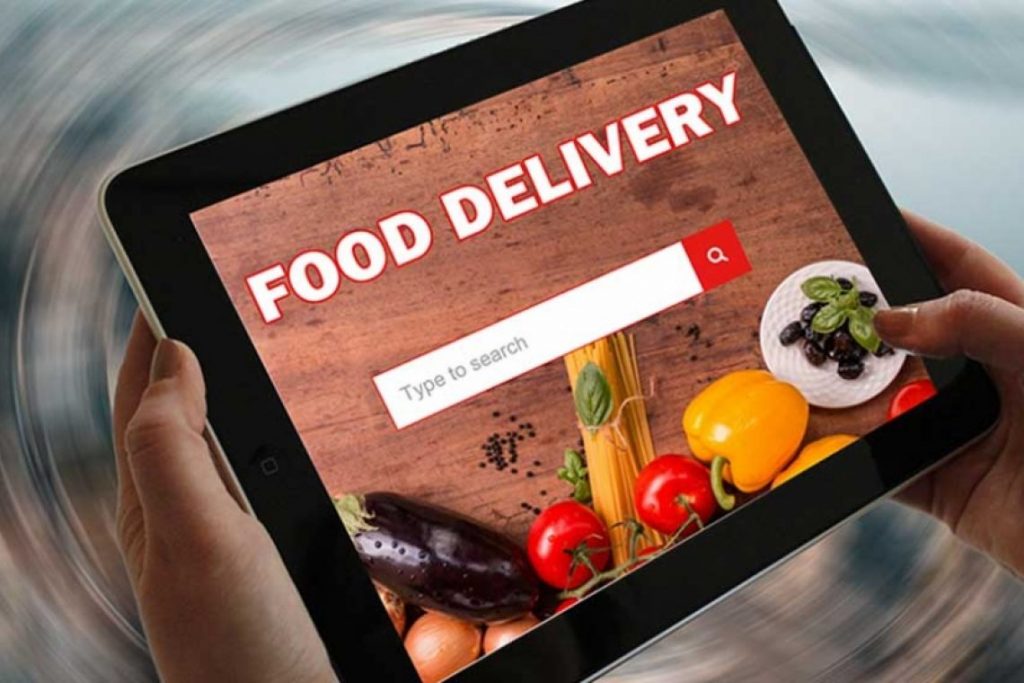
Mobile Experience
Most of the customers use their mobile devices to order food. Magento is a mobile-friendly platform allowing store owners to develop a mobile website without any difficulty. Magento Commerce also introduced Progressive Web Applications (PWA) Studio, a toolset that developers can use to build mobile storefronts with the help of modern frontend frameworks.
Business System Integrations
Magento supports robust business systems, including ERP ( Enterprise Resource Planning), POS (point of sale), PIM (Product Information Management ), OMS (Organisations Management Service), CRM (Customer relationship management), and CMS (Content Management System ) solutions applying effective web APIs.
With these business systems you can simplify your workflow.
We have large expertise in integrating third-party systems in various countries and across different industries.
Learn moreSuperior User Experience
Due to tight competition in the ecommerce sector, customers expect that your website provides a superior user experience. To help your food delivery business meet shopper demands, Magento 2 offers advanced out-of-the-box features:
- Site and catalog management
- Product and catalog browsing
- Integrated checkout, payment, and shipping
- Customer accounts
- Order management
- International support
- Customer service
- Analytics and reporting
As you can see, Magento has everything you require to start running your food delivery business straight away.
Advanced SEO features for the best food ecommerce sites
Magento provides built-in SEO features that allow you to configure and optimize elements of your page, such as page header, meta tags, and alt tags. Food ecommerce websites built on Magento have an easy navigation system, and responsive design so that search engines can easily crawl through these sites.
Great variety of payment options
One of the main advantages of adopting Magento over third-party online ordering services is that you have the possibility to select your own payment solution. Magento gives a possibility to integrate a great variety of payment gateways.
Beautiful themes
Last but not least, selling food and beverage is definitely a visual experience, so you’ll need a store that looks appealing and can demonstrate your products in the best way. Magento has a great variety of free and paid themes on the Magento marketplace that will help you create a beautiful ecommerce delivery platform.
All Magento B2B themes are SEO-friendly, have a mobile-responsive design and simplified installation process, are compatible across browsers, have advanced product presentation features, and support multiple languages.
How much does it cost to build an ecommerce solution for food delivery?
The price of food delivery website development includes many factors such as the difficulty of the project, design, setup, hosting, developer rates, integrations, functionality, support, and maintenance.
It takes between 150 – 600 hours to finish a food delivery website depending on the business goals and complexity of the project.
Contact us today to build a custom food delivery website on Magento at an affordable cost in only 3 weeks!



